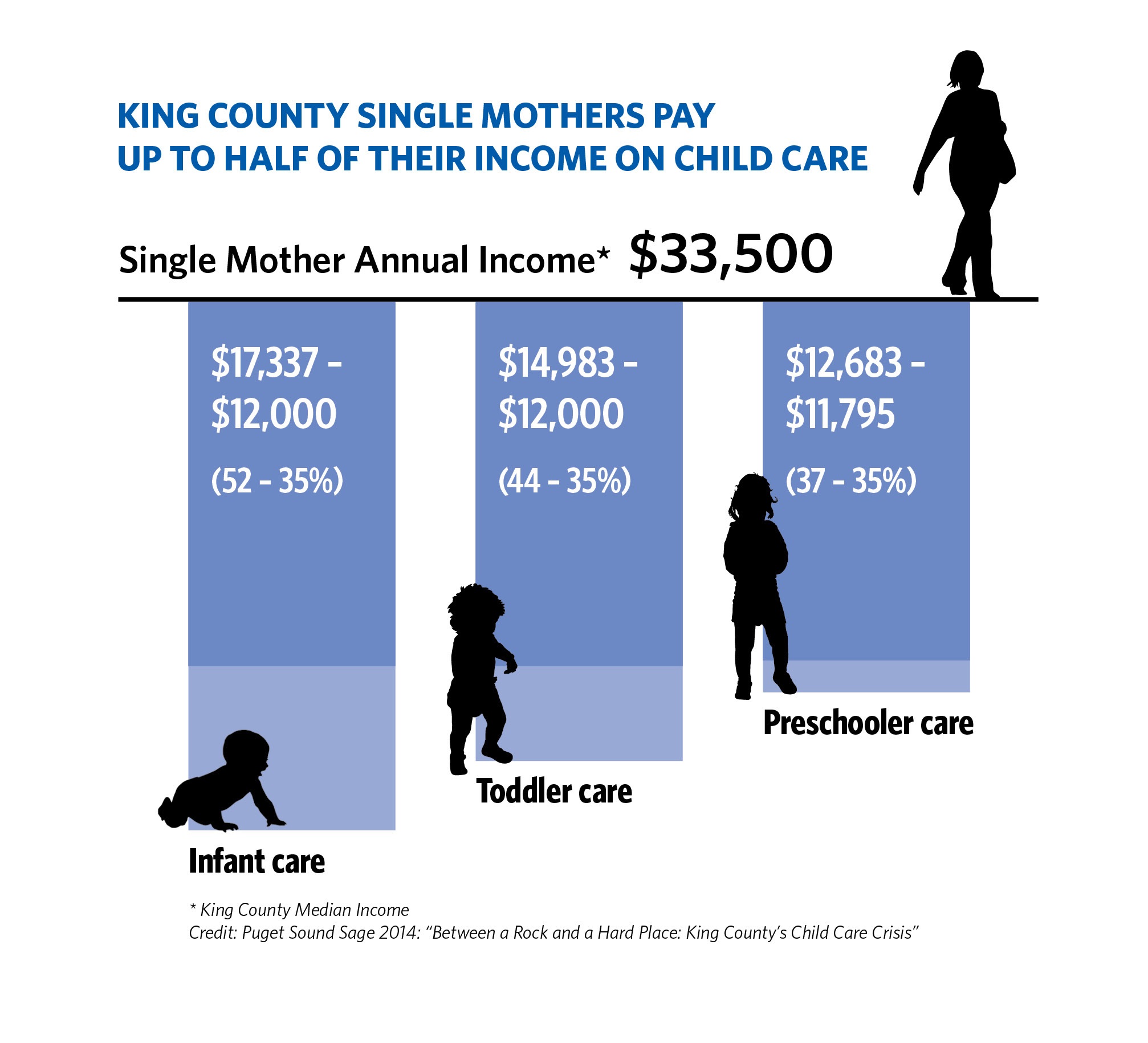By Nicole Vallestero Keenan, Puget Sound Sage and Ellicott Dandy, One America
Climate change is one of the biggest threats to social, economic and racial equity. Our jobs, our health, and the communities where we live are threatened by climate change, and we can expect more severe heat waves, flooding, extreme weather events, food scarcity, and the increased spread of disease to have the most direct impact on low-income communities and people of color. Although it is often overlooked, addressing environmental inequality is an essential component to moving strong policies that make our environment healthier for everyone. Why? In part it’s about doing what’s right, but it’s also necessary.
Research, by environmental justice organization Green for All, shows that people of color are more likely to care deeply about the environment. As in the rest of the nation, the number of people of color living in Washington State is growing. Census data shows that population growth rates among black, Latino, and API communities outpaces the growth of white communities, and the trend is predicted to continue. As the environmental movement considers strong policies for healthier people and a healthier planet, it must craft policies that serve the interests of the people most impacted, and the people whose voting base is growing.
Even though there is a growing population of people of color in Washington, who are likely to support environmental sustainability, a recent report from Green 2.0, finds that organizations at the forefront of the environmental movement are ill-equipped to engage and empower people of color in their movement. Green 2.0 finds environmental government agencies, foundations, and NGOs are often guilty of unconscious bias, apathy in addressing diversity, and of inadvertently maintaining a “green ceiling” such that the percentage of people of color employees has not grown in decades.
In this context, many of Washington’s environmental organizations are searching for ways reverse the trend found by Green 2.0 and better engage with communities of color. One key element to better engage with communities of color is to incorporate social justice into their work.
Here are four ways mainstream environmental organizations can better incorporate justice into the environmental movement:
- Re-think communications: As long-time environmental activist Gail Swanson says: “You can’t enlist all humanity if you only speak to half of the population.” Communications experts in environmental organizations know they have to change the way they talk about the environment to be more relevant to people’s every-day lives, and many have taken important steps to talk about health, safety and jobs. However, communications is just one step to increasing engagement with communities of color, and will often come naturally if an organization applies a social justice lens to their work.
- Train staff to apply a critical racial lens: Trainings that teach staff to understand and address racial inequities are important, but it’s even more crucial for staff to learn how to and practice applying this awareness to their work.
How does this policy affect communities of color or low income communities? What barriers inhibit communities of color from fully engaging in this program? Has my organization sought out and included people of color in crafting this program or policy?
The process of asking and seeking answers to these questions can open pathways to deep collaborations with people of color and community based organizations.
- Actively seek out the expertise of community-based organizations: No need to reinvent the wheel! Fortunately for environmental organizations, there are people who have been doing incredible environmental justice work in communities of color for years. The mainstream environmental community can and should seek them out and work to support their programs and policy agendas. They should incorporate their input in policy design with the understanding that the policy’s success depends on local expertise of the problem and its possible solutions. Many environmental groups have already begun doing this work, and we encourage strong and socially just partnerships.
- Promote and hire people of color into management positions: The Green 2.0 report finds that the few people of color employed by the environmental organizations and agencies studied tend not to hold leadership positions, with the exception of the “diversity manager” role. Even genuine attempts to include people of color in the environmental movement, may be misguided nonetheless. Ensuring people of color have institutional power in environmental organizations is critical for diversifying the environmental movement. This means recruiting people of color to the board and to management-level positions, which means they must expand beyond established networks. When people in charge of hiring are from the communities their organization hopes to engage, more people from these communities are more likely to join the team.





